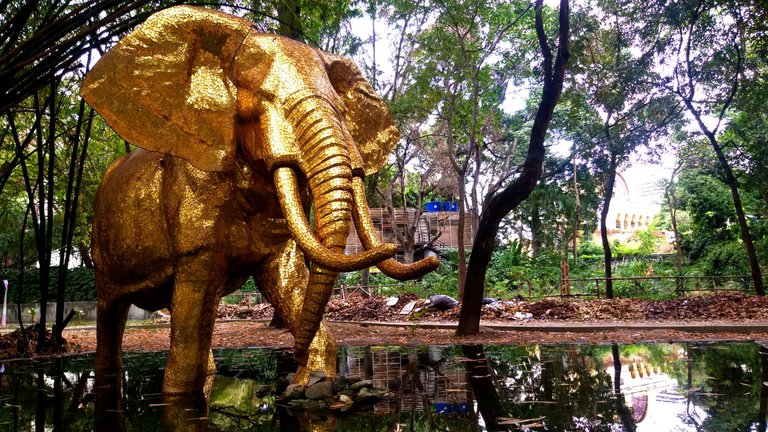
El conocido Parque Los Caobos se inaugura en el año 1920 bajo el nombre de Parque Sucre (en honor al héroe nacional Antonio José de Sucre). El mismo se ubica en los terrenos donde, décadas atrás, estaba construida la Hacienda "La Industrial" (cuyo propietario era Don José Mosquera). Sin embargo, en el año 1937 el consejo municipal le cambia el nombre por Los Caobos (debido a la preponderancia de estos árboles en la zona, erguidos desde tiempos de la colonia).
Es importante resaltar que, pese a que el parque se encuentra ubicado justo en el eje central de Caracas, específicamente entre Plaza Venezuela y el complejo cultural Teresa Carreño, son pocas las personas quienes lo visitan. Puedo especular distintas razones: desconocimiento, miedo por la delincuencia que impera en la zona, letanía citadina, desinterés... Lo cierto es que el parque está allí, esperando pacientemente, con sus caobas de antaño y su atmósfera apacible, que los ajetreados caraqueños apaguen por un rato sus motores y conozcan sus maravillas.
Esa es la razón por la cual decidí armar esta especie de paseo virtual por los distintos espacios del parque, para que de esta manera puedas, al menos desde la pantalla de tu ordenador o tu teléfono, atestiguar la belleza que te espera. Y, aunque nada se compare con apreciar el sitio con tus propios ojos, espero disfrutes tanto como yo de estas obras de arte.
Dicha limitante me obliga a usar, con la mayor sensibilidad posible, el lente de mi cámara, y capturar las mejores tomas y los mejores instantes. En esta oportunidad compartiré algunas fotos de una de las primeras esculturas que pueden encontrarse en el parque: Elefante Africano Dorado. Hecho a escala real, este hermoso paquidermo dorado se yergue sobre un espejo de agua, tiene una de sus patas apoyadas sobre un pedestal de roca y las orejas y la cola dispuestas al viento, dando a entender con ello que el mismo se encuentra en movimiento. Además, la postura le confiere a la pieza, pese a ser un animal pesado y enorme, cierto grado se ligereza.
Según sus donadores, el vistoso elefante simboliza la fuerza y la tenacidad que es características de estos animales. Sin embargo, yo le doy una lectura más profunda, y la contextualiza como un símbolo de la memoria, y de dolor, puesto que dichos animales son victimados para robarles sus colmillos. Su color dorado, que alude a la opulencia, a la riqueza, puede decirnos que es precisamente esa la razón por la cual las naciones ricas en recursos naturales siempre son Blanco de potencias foráneas (sin ánimo de sonar político).
Su postura me habla del movimiento y de la libertad. Supongo que los autores pretendías capturar esa contradicción, entre un animal cuyo peso puede sugerir estabilidad y lentitud, y la gracilidad con la que el viento se desplaza, invitándonos a la rapidez y vivacidad. Sea lo que sea, sin duda es una pieza que vale la pena ver en persona. Si alguna vez vienes a la capital, no dudes en visitar el parque y apreciar este hermoso paquidermo dorado sobre un espejo de agua.
¿Ustedes qué opinan? ¿Qué les transmite esta pieza? ¿Les dice algo su postura eternidad al compás se la brisa? De más está decir que sus comentarios son importantes para mí, tu opinión me motiva a seguir construyendo. Cualquier sugerencia o crítica, la recibiste con respeto. ¡Un abrazo! ¡Nos vemos en una próxima publicación!
The well-known Parque Los Caobos was inaugurated in 1920 under the name of Parque Sucre (in honor of the national hero Antonio José de Sucre). It is located on the land where, decades before, the Hacienda "La Industrial" (whose owner was Don José Mosquera) was built. However, in 1937 the municipal council changed its name to Los Caobos (due to the preponderance of these trees in the area, erected since colonial times).
It is important to note that, although the park is located right in the central axis of Caracas, specifically between Plaza Venezuela and the Teresa Carreño cultural complex, few people visit it. I can speculate different reasons: lack of knowledge, fear of crime in the area, urban litany, lack of interest.... The truth is that the park is there, patiently waiting, with its mahogany trees of yesteryear and its peaceful atmosphere, for the busy caraqueños to turn off their engines for a while and get to know its wonders.
That is the reason why I decided to put together this kind of virtual tour through the different areas of the park, so that you can, at least from your computer screen or your phone, witness the beauty that awaits you. And, although nothing compares to appreciating the site with your own eyes, I hope you enjoy these works of art as much as I do.
This limitation forces me to use, with the utmost sensitivity, the lens of my camera, and capture the best shots and the best moments. In this opportunity I will share some photos of one of the first sculptures that can be found in the park: Golden African Elephant. Made to real scale, this beautiful golden pachyderm stands on a mirror of water, has one of its legs resting on a rock pedestal and the ears and tail arranged to the wind, thus implying that it is in motion. In addition, the posture gives the piece, despite being a heavy and huge animal, a certain degree of lightness.
According to its donors, the colorful elephant symbolizes the strength and tenacity that is characteristic of these animals. However, I give it a deeper reading, and contextualize it as a symbol of memory, and of pain, since these animals are victimized to steal their tusks. Its golden color, which alludes to opulence, to wealth, may tell us that this is precisely the reason why nations rich in natural resources are always the target of foreign powers (not to sound political).
Your posture speaks to me of movement and freedom. I suppose the authors intended to capture that contradiction, between an animal whose weight may suggest stability and slowness, and the gracefulness with which the wind moves, inviting us to speed and vivacity. Whatever it is, it is certainly a piece worth seeing in person. If you ever come to the capital, do not hesitate to visit the park and appreciate this beautiful golden pachyderm on a mirror of water.
What do you think, what does this piece transmit to you, does its eternal posture to the rhythm of the breeze say something to you? Needless to say that your comments are important to me, your opinion motivates me to continue building. Any suggestions or criticisms, respectfully received, best regards! See you in a future publication!
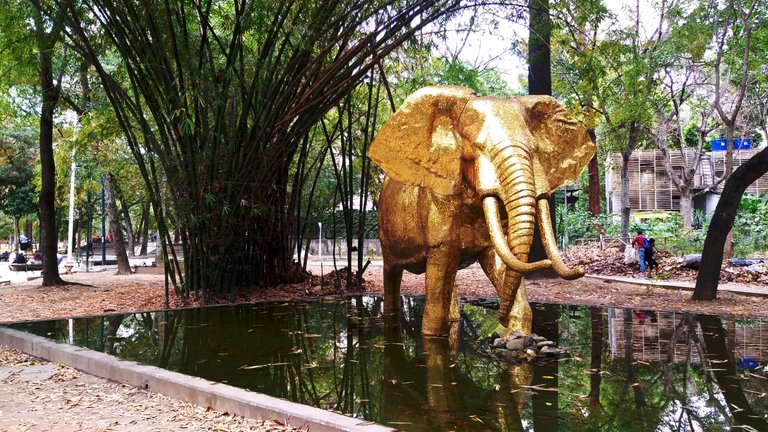
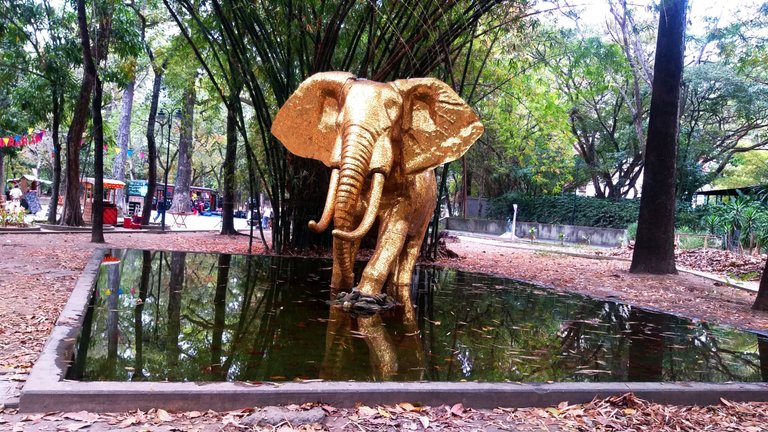
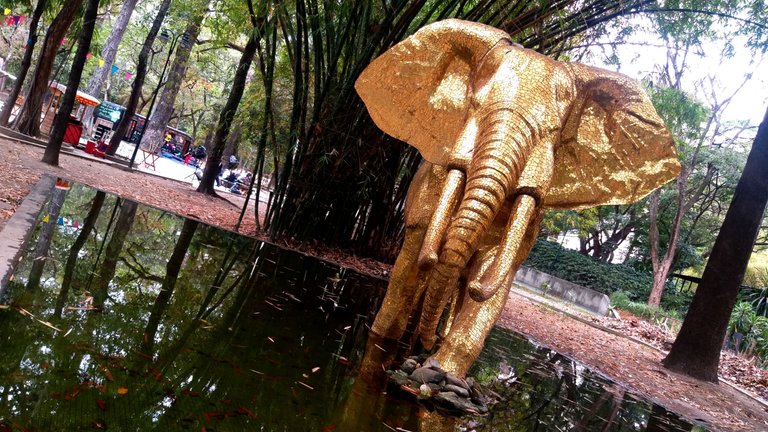
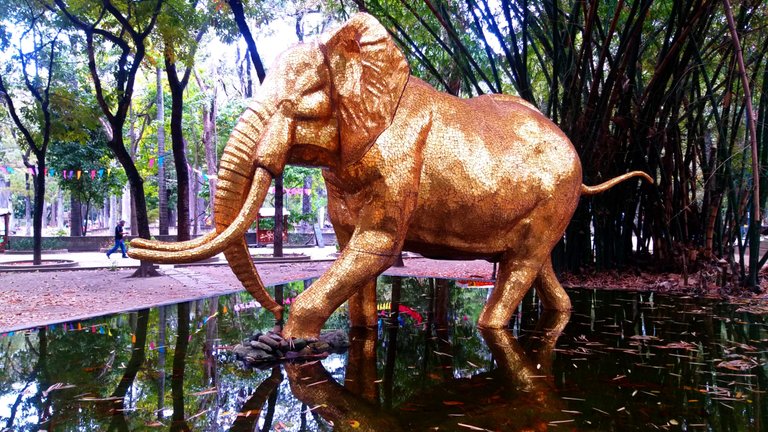
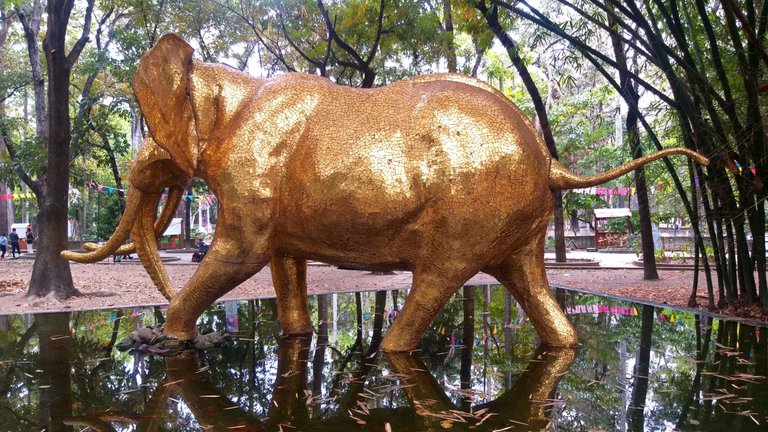
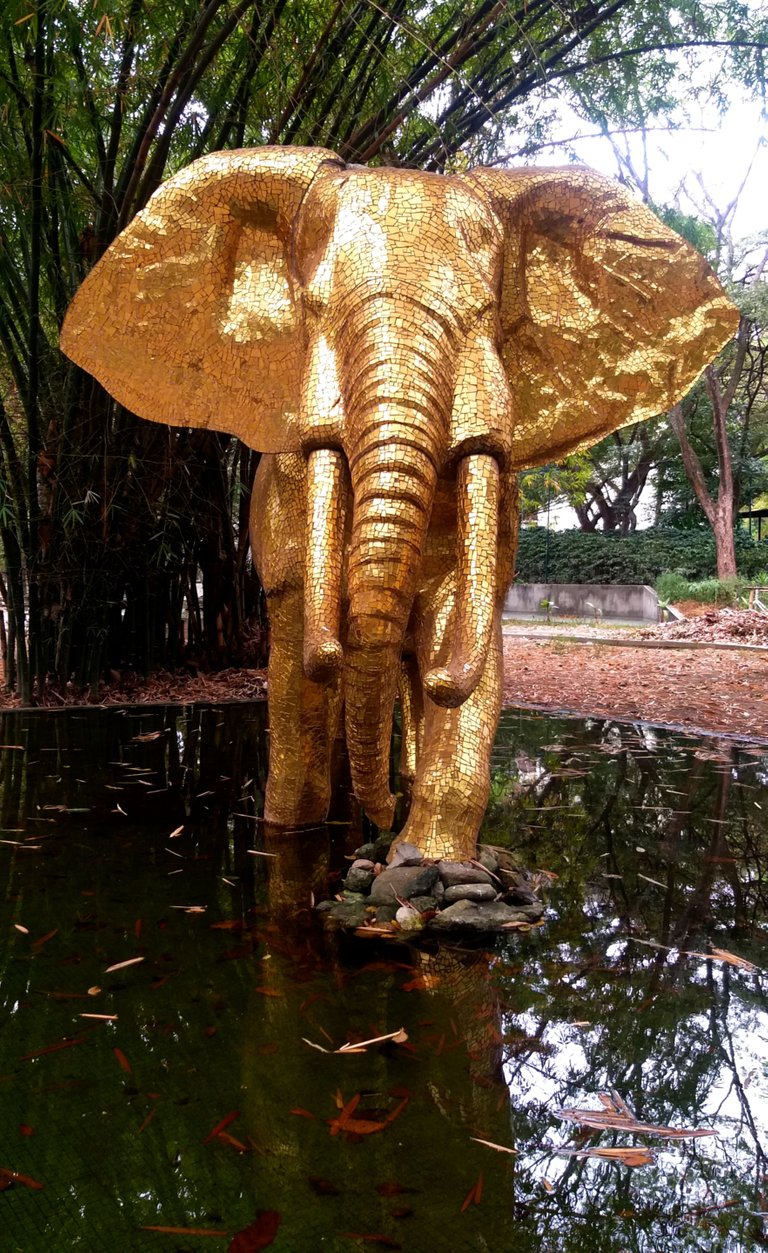
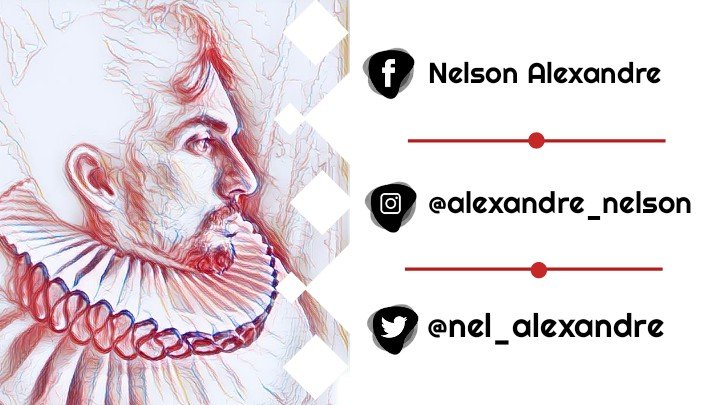
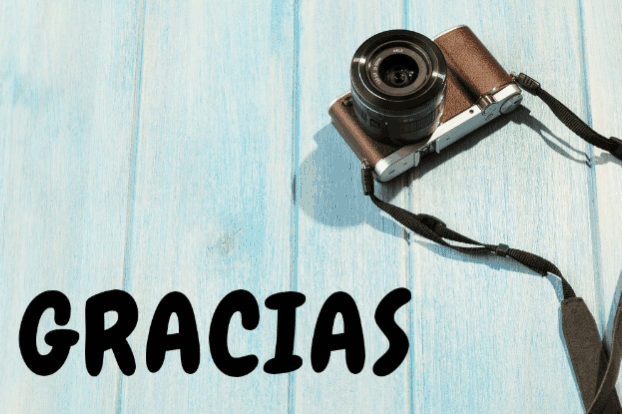
@zaynel, excelente registro fotográfico! Sin duda tienes mucho talento para la fotografía. Sigue compartiendo tus maravillosas publicaciones. Quedo ansioso para las próximas.
@lett1973, muchísimas gracias por tus palabras. Me motivan a seguir construyendo. Respecto al uso del idioma inglés, soy consciente de que no lo manejo, solo lo básico (aunque pienso estudiarlo muy pronto), lo hago como un medio para visibilizar neutra belleza en el exterior.
@mayvil, muchísimas gracias por el apoyo.